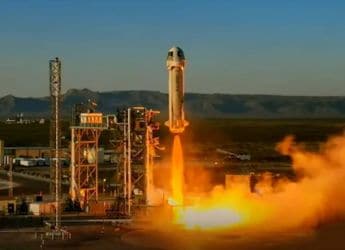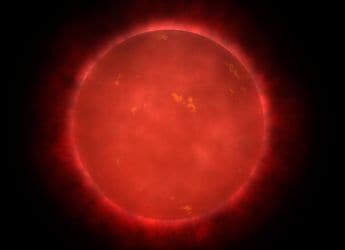- Home
- Science
- Science News
- ISRO Successfully Launches GSAT 9 'SAARC' South Asian Communication Satellite
ISRO Successfully Launches GSAT-9 'SAARC' South Asian Communication Satellite

An Indian rocket with the over two ton South Asia Satellite or GSAT-9, intended to address the region's "economic and developmental priorities", blasted off from the Sriharikota spaceport on Friday evening.
Precisely at 4:57pm, the Geosynchronous Satellite Launch Vehicle (GSLV-F09) rose into the sky from the second launch pad at the Satish Dhawan Space Centre at the spaceport in Andhra Pradesh.
The 49 metre-tall, 415 tonne rocket will sling into orbit, the 2,230kg South Asia Satellite, intended as an 'Indian Gift' for use by its fellow South Asian Association for Regional Cooperation (SAARC) nations save Pakistan, which had opted out, stating "it has its own space programme.
In 2014, Prime Minister Narendra Modi had tasked the Indian Space Research Organisation (ISRO) to develop a satellite for use by the Saarc countries.
Costing around Rs. 235 crores, the satellite was initially known as the SAARC satellite but with Pakistan deciding to keep out, it is now called the South Asia Satellite. Its lifespan is over 12 years.
In his most recent monthly radio address 'Mann Ki Baat', Modi said the South Asia Satellite will go a long way in addressing the region's economic and developmental priorities.
"Natural resources mapping, telemedicine, the field of education, deeper IT connectivity or fostering people-to-people contact, this satellite will prove to be a boon in the progress of the entire region.
"It is an important step by India to enhance cooperation with the entire South Asia...It is an invaluable gift. This is an appropriate example of our commitment towards South Asia. I welcome all the South Asian countries who have joined us on this momentous endeavour," he had said.
According to an official, the ISRO on an experimental basis decided to have electric power for the satellite.
"We have not reduced the volume of the traditional on-board fuel because of the electric power. We have added electric power facility to check its performance for use in future satellites," the official told IANS.
He said the next satellite with electric power will be the GSAT-20 slated for launch in 2018.
The GSLV is a three stage/engine rocket. The core of the first stage is fired with solid fuel while the four strap-on motors by liquid fuel. The second is the liquid fuel and the third is the cryogenic engine.
Get your daily dose of tech news, reviews, and insights, in under 80 characters on Gadgets 360 Turbo. Connect with fellow tech lovers on our Forum. Follow us on X, Facebook, WhatsApp, Threads and Google News for instant updates. Catch all the action on our YouTube channel.
Related Stories
- Samsung Galaxy Unpacked 2025
- ChatGPT
- Redmi Note 14 Pro+
- iPhone 16
- Apple Vision Pro
- Oneplus 12
- OnePlus Nord CE 3 Lite 5G
- iPhone 13
- Xiaomi 14 Pro
- Oppo Find N3
- Tecno Spark Go (2023)
- Realme V30
- Best Phones Under 25000
- Samsung Galaxy S24 Series
- Cryptocurrency
- iQoo 12
- Samsung Galaxy S24 Ultra
- Giottus
- Samsung Galaxy Z Flip 5
- Apple 'Scary Fast'
- Housefull 5
- GoPro Hero 12 Black Review
- Invincible Season 2
- JioGlass
- HD Ready TV
- Laptop Under 50000
- Smartwatch Under 10000
- Latest Mobile Phones
- Compare Phones
- Huawei Nova 15
- Huawei Nova 15 Pro
- Huawei Nova 15 Ultra
- OnePlus 15R
- Realme Narzo 90x 5G
- Realme Narzo 90 5G
- Vivo S50 Pro Mini
- Vivo S50
- Asus ProArt P16
- MacBook Pro 14-inch (M5, 2025)
- OnePlus Pad Go 2 (5G)
- Infinix Xpad Edge
- OnePlus Watch Lite
- Just Corseca Skywatch Pro
- Acerpure Nitro Z Series 100-inch QLED TV
- Samsung 43 Inch LED Ultra HD (4K) Smart TV (UA43UE81AFULXL)
- Asus ROG Ally
- Nintendo Switch Lite
- Haier 1.6 Ton 5 Star Inverter Split AC (HSU19G-MZAID5BN-INV)
- Haier 1.6 Ton 5 Star Inverter Split AC (HSU19G-MZAIM5BN-INV)







![[Partner Content] OPPO Find X9 Two Week Experience: Here's Why It Stands Out](https://www.gadgets360.com/static/mobile/images/spacer.png)









